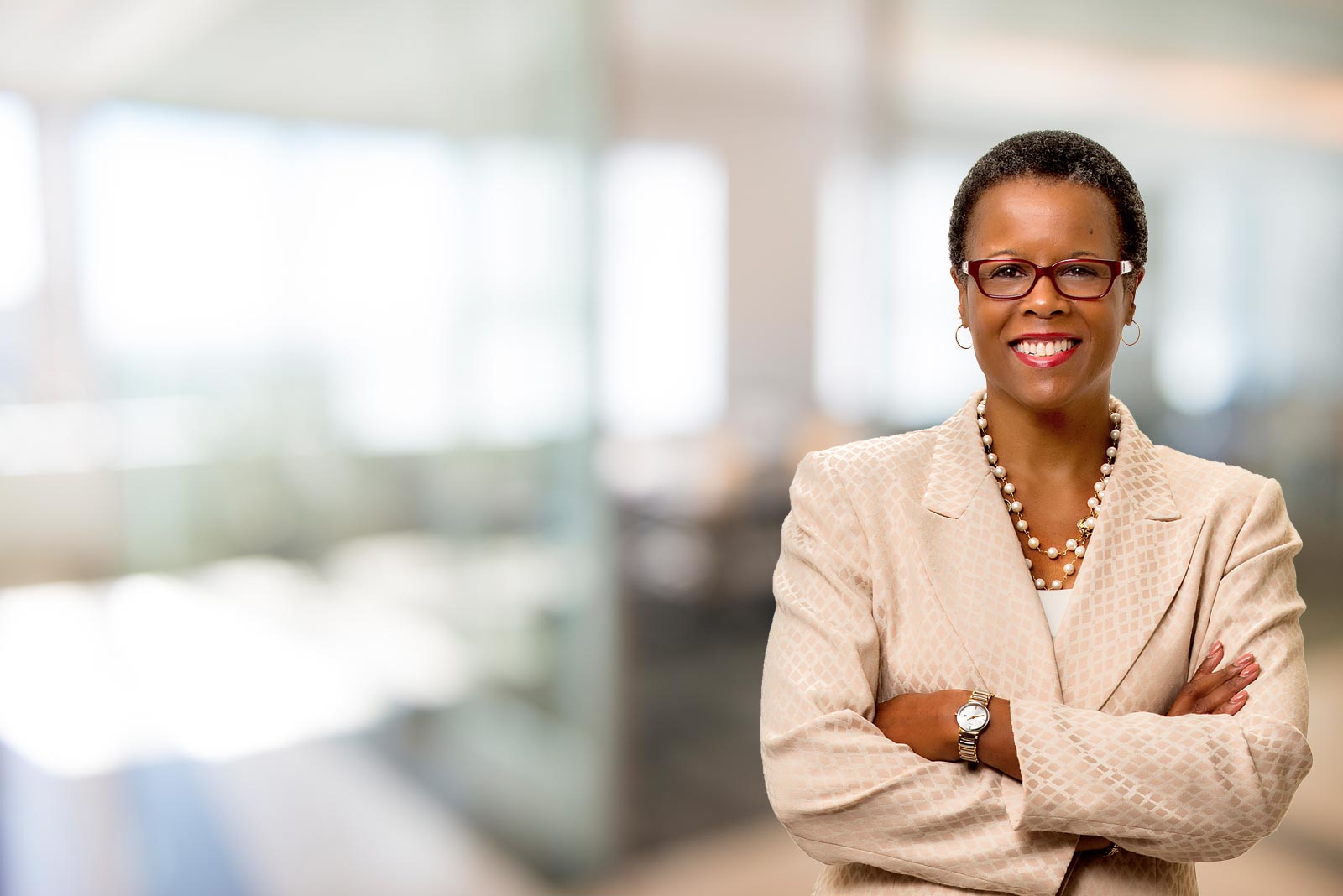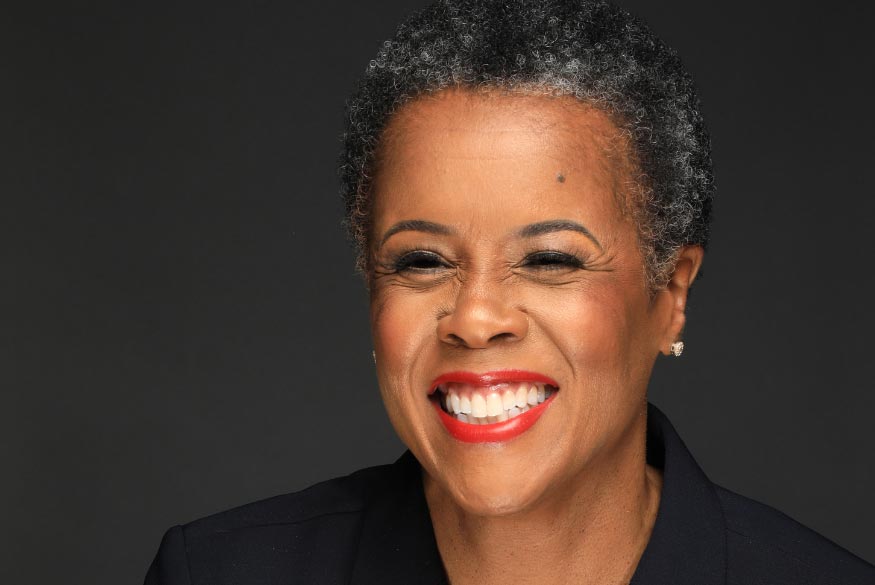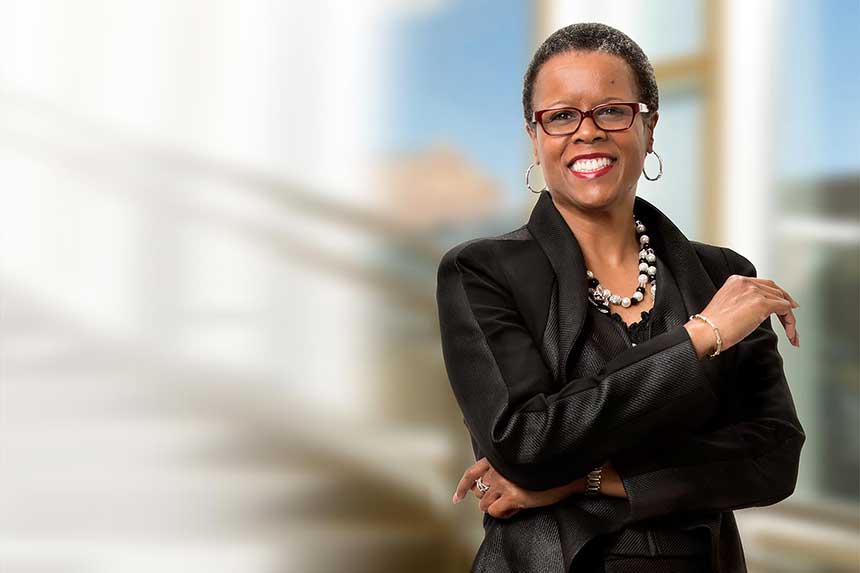Corporate Profile with Kym Harris
GF: Who is Kym Harris?
KYM: I am a daughter, sister, granddaughter, niece, auntie, friend, and significant other. I am a woman whose self-confidence comes from doing what I love. The passion I have for my work drives me to be among the best at what I do. I am resilient and have gained more education from my failures than any academic degree could ever provide. I am humorous and witty, sometimes annoyingly so. I am a woman who is building a legacy through philanthropy. I am intense, but don’t take myself too seriously. I am a women that has become quite comfortable in her own skin and who is intentional about “showing up” unapologetically. I am a leader with a passion for helping others maximize their potential. I am an entrepreneur with a vision of wealth. I am a work in progress.
GF: What does Work, Life, Balance mean to you?
KYM: I recently started focusing on “highlights” in my life. This is helping me find more balance. Highlights are the things that create wonderful memories. Last summer I attended a Natalie Cole concert. I reminisce about that concert regularly; it was such an enjoyable evening. When I heard of Natalie’s passing, I was especially grateful that I actually “acted” on my desire to go to the concert. I’m doing more of that these days – acting on my desires. I once heard a leader say that there is no such thing as work-life balance, it’s just a matter of being truly “present” wherever you are. I subscribe to that philosophy. For me that means when I’m with my family or hanging out with “my guy,” they get my undivided attention – without distraction. Sometimes balance is simply an hour-long break with a hot cup of coffee or glass of wine, a magazine, and some great jazz in the background.
Other times it’s planning a trip and having something to look forward to. Sometimes it is simply taking a 20-minute nap to reenergize. I also exercise regularly. Exercise fuels my energy and provides the mental clarity necessary for a successful career and a healthy life.
GF: You mention “Texture”…What is texture? —How should women use it?
KYM: We are all multidimensional. Texture gives our dimensions character. An individual’s texture is characterized by the things that give them energy, their activities, interests, and passions. Texture is also characterized by perspective, which is the result of experience; and emotion, how we respond to our experiences. When others experience our texture, they are getting a real sense of who we are. The extent to which we allow others to “feel” our texture influences how they experience us.
After meeting the mother of my niece’s first boyfriend, my sister-in-law shared that it was interesting to hear about the mother’s travels and her view of how she fits in the world. That’s texture. When someone enters my office, they immediately “feel” who I am. Everything in that space is an expression of my personality that a professional interaction does not reveal. It communicates my warmth, which helps to offset my intensity. It makes people more comfortable and opens the door for stimulating conversation and sharing.
In my life, I create texture by acting on my desires, exploring my natural talents, and following my curiosity. That simply means that I take advantage of opportunities to do the things that bring me joy and have the potential to become highlights in my life. In business, my curiosity leads me to new and exciting opportunities. I don’t allow “not knowing” to stop me from trying something new. I’m willing learn as I go.
Women should use the concept of texture to enrich their lives, to be more, to do more, and share more of themselves. Women of color are often seen through the lens of long-held stereotypes. Exposure to the texture of their lives has the potential to influence those perceptions. In general, texture provides more information about what we bring to the table personally and professionally. I encourage women to think about how they “show up” in their professional relationships and the personal relationships that are important to them; to be more vulnerable, and take more risks – these are the things that create and demonstrate texture.
GF: How important is professional development
KYM: Professional development is crucial to career success. Most people think in terms of workshops, conferences, and training as the primary source of professional development. Other forms of professional development can be found in stretch assignments at work, “active participation” and leadership roles in professional organizations, nonprofit board participation, and mentoring relationships. Substantial growth also comes from regular and honest feedback. I encourage my clients to identify feedback providers they trust to tell them the “truth” and to initiate feedback conversations at least twice a year, outside of the standard performance management cycle. There is a quote I refer to often, “The truth will set you free, but first, it will piss you off.” The individuals in your life who are courageous enough to tell you the truth are the people most invested in your success. Don’t get angry when you hear feedback that “hurts your feelings.” Instead, say “thank you” and establish an action plan to address the issue. Feedback contributes to greater self-awareness. Once you know your flaws, no one can hold them against you.
GF: Mentorship is Key” Right?
KYM: Absolutely, mentorship is key. In addition to seeking mentorship for development purposes, mentoring provides visibility to senior leaders in an organization and contributes to relationship building. Many people become focused on letting their work speak for itself. However, it is important to recognize that “competence is more than performance.” The work is only part of the equation, relationships are the other part.
The question then becomes, “How do I find a mentor?” I encourage individuals to identify someone in the organization with whom they would like to spend time and learn more about. Invite the individual for coffee or ask for 30 minutes on their calendar for a chat. Enter the conversation with curiosity. What do you want to learn about the person? What experience might he/she have that you can learn from? What are you willing to share about yourself, your accomplishments, and your aspirations? After the first interaction, look for relevant articles you can share via email, which creates another point of contact as well as a discussion topic for the next time you get together. If you do the heavy lifting to keep the person engaged, she/he will look forward to interacting with you, learning more about you, and become invested in your success. Build the relationship; don’t categorize it. Genuine relationships don’t require labels.





